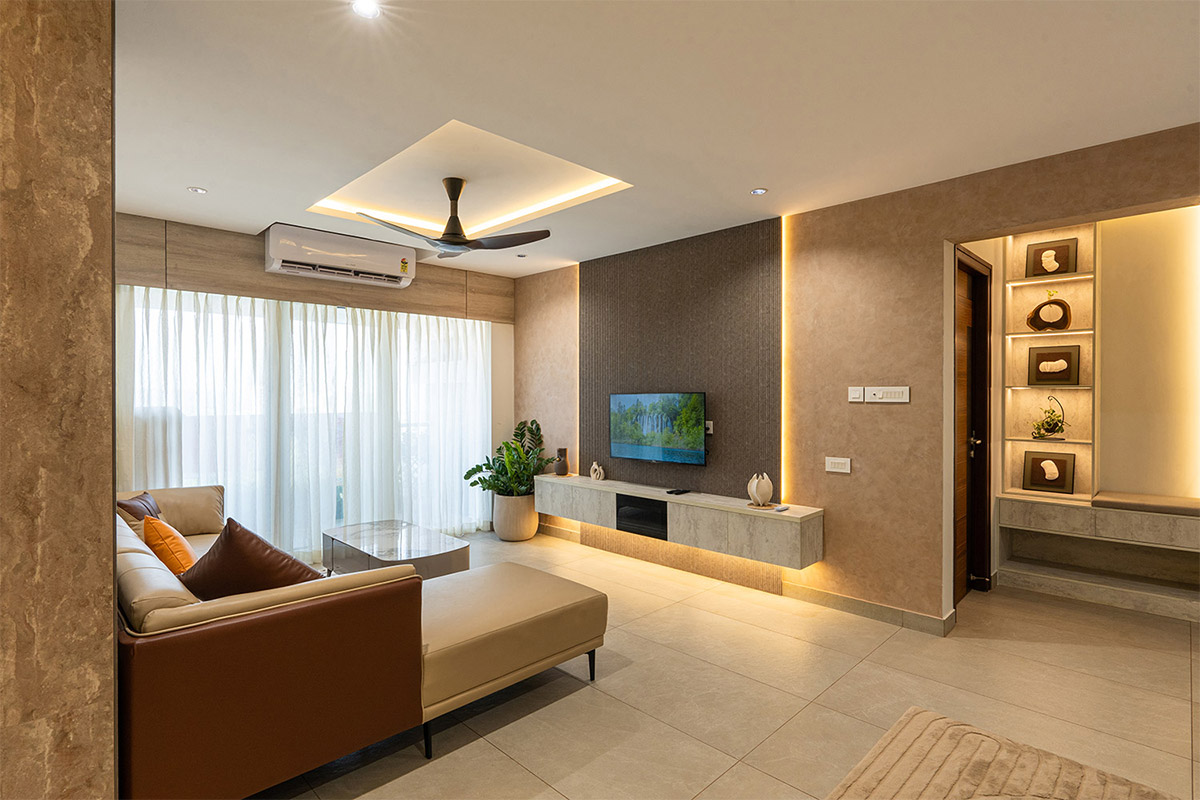
While lighting and colour play significant roles, there's a silent yet powerful force at work: texture in interior design. The materials we choose for our spaces speak a hidden language, influencing not just what we see and touch, but also how we feel and perceive the entire environment. Let's delve into this fascinating world and unlock the secrets of how materials impact our interior perception.
Creating Depth and Intrigue with Texture
Layering Textures for Dimension: Think about combining a plush velvet cushion on a smooth leather sofa, or a rough woven rug on a polished wooden floor. This layering of contrasting textures adds depth to the room. It also prevents a room from feeling flat and monotonous. It invites the eye to explore and discover subtle nuances within the space.
The Power of Contrast: Comparing distinctly different textures creates dynamic and intriguing spaces. Consider the striking contrast of a smooth glass table top against a rugged stone wall. This interplay of rough and smooth, matte and glossy, adds a layer of sophistication and visual excitement.
Highlighting Focal Points: Just as artists use light to draw attention, interior designers use texture. A textured statement wall, a chunky knit throw, or a uniquely textured piece of art can serve as a focal point. They instantly draws the eye and adding character to a room.
Texture's Influence on Comfort and Mood
Embracing Warmth and Cosiness with Soft Textures: Soft, tactile textures like wool, linen, and faux fur create a welcoming and comfortable atmosphere. Imagine sinking into a plush armchair draped with a soft throw – the texture itself evokes a sense of relaxation and warmth.
Evoking Sleekness and Modernity with Smooth Surfaces: In contrast, smooth, polished surfaces like glass, metal, and sleek lacquered finishes often evoke a sense of sophistication and modernity. These textures reflect light and contribute to a clean and streamlined aesthetic.
Creating Intimacy with Matte Textures: Rough, matte textures tend to absorb light and create a softer, more subdued ambiance. Think of a room with textured plaster walls or a nubby linen curtain. These surfaces can contribute to a feeling of intimacy and enclosure.
How Texture Affects Visual Perception
The way we perceive the size and depth of a room can also be influenced by the textures within it.
Expanding Space with Light and Reflective Textures: Light bounces off smooth on glossy surfaces. Think of mirrored furniture or walls with a subtle sheen.
Creating an Illusion of Depth with Visual Textures: Even visual textures like a patterned wallpaper or a textured paint finish can create an illusion of depth. They can add visual interest to a space without being physically tactile.
The Emotional Impact of Texture
Ultimately, the textures we incorporate into our interiors contribute to the overall emotional experience of the space.
Engaging the Senses: Different textures evoke different sensory experiences. Each material engages our senses in a unique way. The coolness of marble, the warmth of wood, and the softness of velvet can enhance the emotional impact of a space.
Personalizing Your Space with Texture: Texture is a powerful tool for personalization. By choosing materials that resonate with your personal style and preferences, you can create a space that truly feels like your own.
Practical Considerations of Texture
Beyond aesthetics and emotions, practical considerations also play a role in the selection of textures.
Light Reflection and Brightness: As mentioned earlier, smooth surfaces reflect light, while rough surfaces absorb it. Consider the natural light in your space and choose textures accordingly to achieve the desired level of brightness.
Durability and Functionality: The choice of materials and their textures should also align with the intended use and durability requirements of the space.
There's a growing appreciation for bringing the outdoors in, and natural textures in interiors play a crucial role in achieving this. Materials like wood, stone, linen, and wool connect us to the natural world, bringing a sense of organic beauty and tranquillity into our homes.
In conclusion, the hidden language of textures is a vital aspect of interior design. By understanding how different materials impact our visual, tactile, and emotional experiences, we can create spaces that are not only aesthetically pleasing but also deeply resonant and comfortable. So, the next time you step into a room, pay attention to the textures – they are speaking volumes.

